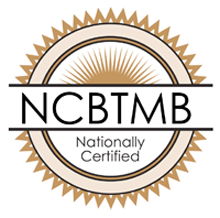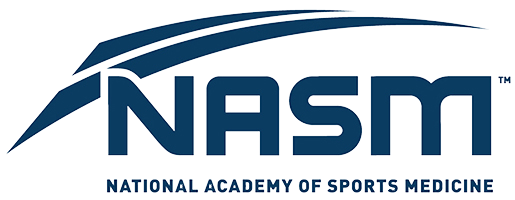Embarking on a career as a medical assistant offers the unique opportunity to play a crucial role in the healthcare industry, providing essential support to both patients and medical professionals. This path not only promises a fulfilling career but also a growing demand for skilled assistants across various medical settings. However, understanding how to become a medical assistant only fulfills one part of the equation. To truly navigate this journey, one must be prepared to meet the necessary educational requirements, develop critical skills, and commit to continuous learning and professional development.
This guide aims to provide a step-by-step overview on how to become a medical assistant, starting from fulfilling basic educational prerequisites to enrolling in a reputed medical assistant program. We will explore the importance of developing key skills crucial for medical assisting, the process of choosing the right program tailored to your career goals, and the significant role of gaining hands-on experience through clinical practice.
Finally, we discuss the path to certification and the avenues for career advancement in this dynamic field, offering a comprehensive roadmap designed to guide aspiring professionals towards achieving success as medical assistants.
Step 1: Fulfill Basic Educational Requirements
To embark on a career as a medical assistant, the initial step involves meeting the basic educational prerequisites. Here’s a structured guide to navigate through this foundational phase:
- High School Diploma or GED: Begin by securing a high school diploma or GED. This is the minimum requirement for entering most medical assistant programs and is essential for foundational knowledge in healthcare.
- Choose the Right Educational Path: Decide between a certificate, diploma, or associate degree based on your career goals. Certificate and diploma programs typically span 9-12 months, making them suitable for those looking to enter the workforce swiftly. On the other hand, a Medical Assisting Associate Degree takes about two years to complete but offers a broader educational foundation, which can be beneficial for future career advancement.
- Accredited Programs: Opt for a program accredited by the Commission on Accreditation of Allied Health Education Programs (CAAHEP) or the Accrediting Bureau of Health Education Schools (ABHES). Accreditation ensures the program meets high educational standards and is often preferred by employers.
- Specialized Courses: Depending on your interest in either clinical or administrative roles, choose courses accordingly. For front office roles, focus on billing, customer service, and insurance. If you prefer direct patient care, look for programs offering extensive training in medical procedures like phlebotomy and medical terminology.
By following these steps, you will establish a strong educational foundation necessary for a successful career as a medical assistant.
Step 2: Develop Key Skills for Medical Assisting
Workplace Skills: Organization, Communication, Empathy
To excel as a medical assistant, mastering a set of core workplace skills is essential. Organization is paramount; you are often tasked with juggling multiple responsibilities such as scheduling appointments, managing patient records, and ensuring that medical supplies are well-stocked. Effective communication is another cornerstone. You must articulate information clearly and sensitively to patients, colleagues, and supervisors to maintain smooth operations and patient trust.
Moreover, empathy is critical. Understanding and sharing the feelings of others, especially patients who may be in distress, is vital for providing compassionate care and building strong patient relationships.
Technical Skills: Computer Proficiency, Medical Software
In today’s digital age, proficiency in computer skills is indispensable for medical assistants. You are expected to navigate various medical software systems with ease, from electronic health records (EHR) to appointment scheduling and medical billing platforms. Familiarity with these tools not only enhances efficiency but also ensures accuracy in patient data handling, which is crucial for effective treatment planning and healthcare delivery.
Additionally, developing skills in medical coding and understanding the nuances of healthcare software can significantly boost your capability to support both clinical and administrative tasks effectively.
Step 3: Choose and Enroll in the Best Medical Assistant Program
In-Person vs. Online Programs
When deciding between in-person and online medical assistant programs, consider your learning style and life circumstances. In-person programs provide structured environments, direct interaction with instructors, and hands-on experience with medical equipment, which are crucial for mastering clinical tasks. These programs typically follow a set schedule, which can benefit students who thrive under a structured routine.
Online programs, on the other hand, offer flexibility and convenience, allowing you to study at your own pace and from any location. This can be particularly beneficial if you are balancing work or family commitments. However, these programs might offer limited hands-on experience and require a high level of self-discipline.
What to Look for in a Program
Choosing the right medical assistant program is pivotal. Ensure the program is accredited by recognized bodies such as the Commission on Accreditation of Allied Health Education Programs (CAAHEP) or the Accrediting Bureau of Health Education Schools (ABHES). Accreditation is not only a marker of quality education but also a prerequisite for many certifying exams.
Consider the program length and the type of credential it offers, whether a certificate, diploma, or associate degree. Evaluate the curriculum to ensure it covers both administrative and clinical skills comprehensively. Practical training components, such as externships, are essential for gaining real-world experience.
Lastly, assess the support services the program offers. Effective career services, job placement assistance, and financial aid options are important factors that can significantly influence your educational and career outcomes.
Step 4: Gain Hands-On Experience through Clinical Practice
Gaining practical experience through clinical practice is a pivotal step in your journey to becoming a medical assistant. This stage allows you to apply theoretical knowledge in real-world settings, honing your skills and preparing you for the demands of the profession.
Importance of Internships
Internships are integral to your training as they provide a structured opportunity to perform administrative and clinical tasks under supervision. Whether it leads to a diploma or an associate degree, quality medical assistant programs include internships in ambulatory healthcare settings. These internships are not merely about observing; you will take vital signs, manage patient records, and even assist in minor procedures.
Typically lasting from two to six weeks, these internships are crucial for developing the hands-on skills necessary for effective patient care and smooth healthcare operations.
Externship vs. Internship
Understanding the difference between externships and internships can help you choose the right type of practical experience. Externships generally involve shadowing professionals and participating in the day-to-day activities of a medical facility for a short period, often ranging from a few days to several weeks. They provide observational experience and a basic understanding of medical environments.
On the other hand, internships are more intensive and are often positioned at the end of your training program. They involve actively working within the healthcare setting, performing a range of tasks, and are considered apprentice-level training. Internships can last up to several months, offering deeper insights and more hands-on experience than externships. They are crucial for mastering the medical assistant role as they allow you to apply your learning in real patient interactions, thereby building your confidence and competence.
Both internships and externships are essential for your growth in the medical assisting field, providing valuable experiences that enhance your resume and increase your employability. Choose the type that best fits your educational goals and career aspirations. By engaging in these practical experiences, you ensure that you are well-prepared to meet the challenges of a medical assistant career, equipped with both knowledge and practical skills.
Step 5: Certification and Career Advancement
How to Get Certified
To become a Certified Medical Assistant (CMA), you must first complete an accredited medical assistant program. After fulfilling the educational requirements, you are eligible to sit for certification exams such as the CMA, Registered Medical Assistant (RMA), or National Certified Medical Assistant (NCMA). These exams assess your knowledge and skills, ensuring you meet industry standards. The cost is generally around $150 per attempt, and while challenging, preparation is key to success. Certification not only enhances employability but also opens doors to advanced roles and increased salaries.
Continuing Education and Specialty Certifications
Continuing education is crucial for maintaining certification and staying current in the medical field. The American Association of Medical Assistants (AAMA) offers numerous opportunities for continuing education units (CEUs) through online courses, workshops, and annual conferences. Specializing further can lead to certifications like Certified Medical Assistant Specialist (CMAS) or focusing on areas such as pediatrics or cardiology.
These specialized roles require additional training but offer opportunities for career advancement and higher compensation. Engaging in ongoing education and specialty certifications ensures that you remain a valuable asset in the healthcare industry.
Conclusion
Throughout this guide, we’ve outlined the clear steps necessary for aspiring professionals to pursue a career as a medical assistant. From fulfilling educational prerequisites to choosing the right program, developing essential skills, and gaining practical experience, this roadmap provides a concrete foundation for those committed to entering the healthcare field. The vital role of certification and the opportunities for career advancement further emphasize the potential for growth and the importance of continuous learning in this dynamic sector.
The journey to becoming a medical assistant demands dedication, a commitment to professional development, and an understanding of the impact these roles have on patients and healthcare delivery. As the healthcare landscape evolves, the demand for skilled medical assistants will continue to grow, underscoring the significance of the outlined steps for those seeking to make a difference in this essential industry.
This guide serves as a comprehensive starting point, ensuring that future medical assistants are well-equipped to meet the challenges and rewards of their chosen career path.
FAQs
What are the essential steps to becoming a medical assistant?
To become a medical assistant, follow these steps:
- Enroll in and complete a medical assisting program.
- Gain experience through internships in medical assisting.
- Obtain certification in medical assisting.
- Assess and refine your skills.
- Apply for medical assistant positions and attend interviews.
- Undergo on-the-job training to acclimate to your new role.
- Plan for your long-term career development in the field.
Is it possible to take the CMA exam without completing a medical assistant program?
While you can sit for the CMA (Certified Medical Assistant) exam without any formal education, you must meet certain educational requirements to actually receive your CMA certification.
What distinguishes a Certified Nursing Assistant (CNA) from a Medical Assistant (MA)?
The primary difference between CNAs and MAs lies in their job functions and whom they assist. CNAs primarily support nurses and are involved in direct patient care tasks such as helping with bathing, dressing, and eating. Medical assistants, on the other hand, support doctors and perform duties that facilitate medical examinations, such as preparing examination rooms and administering vaccines.




